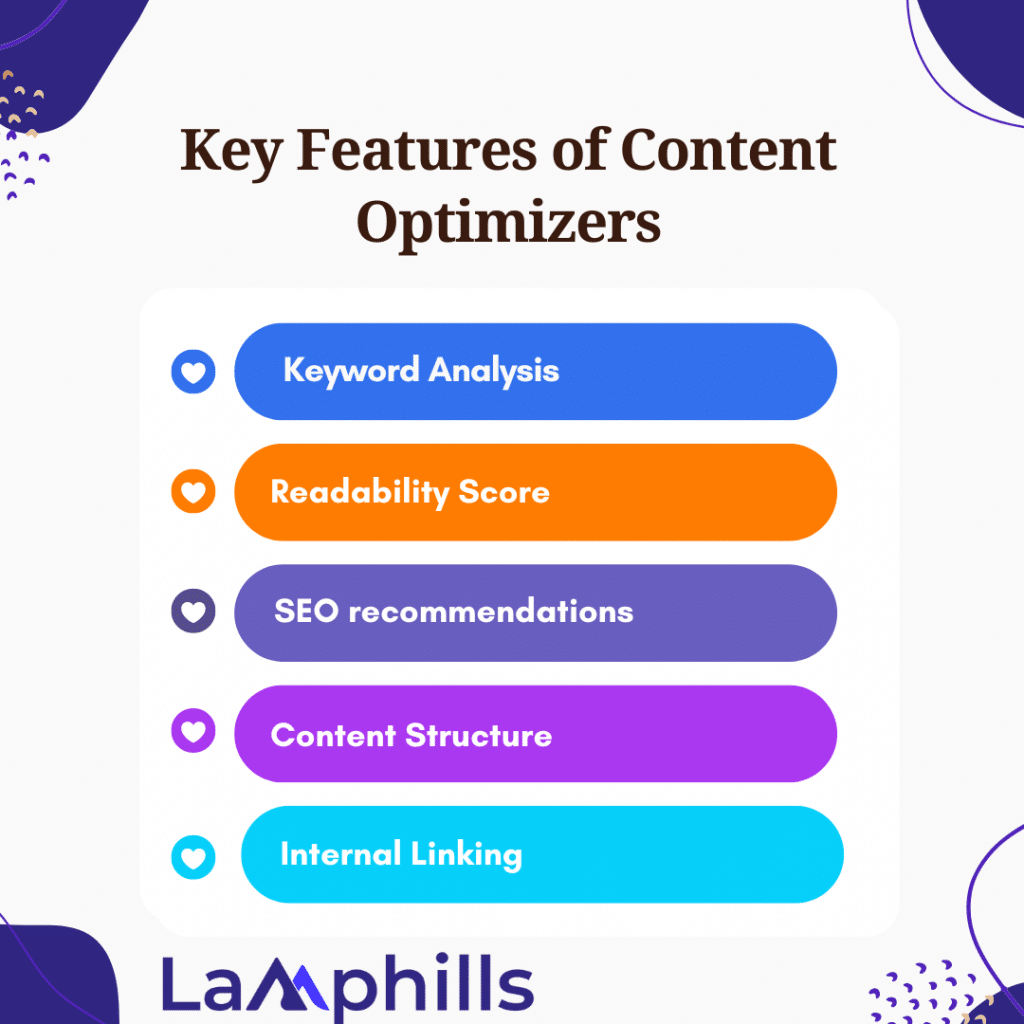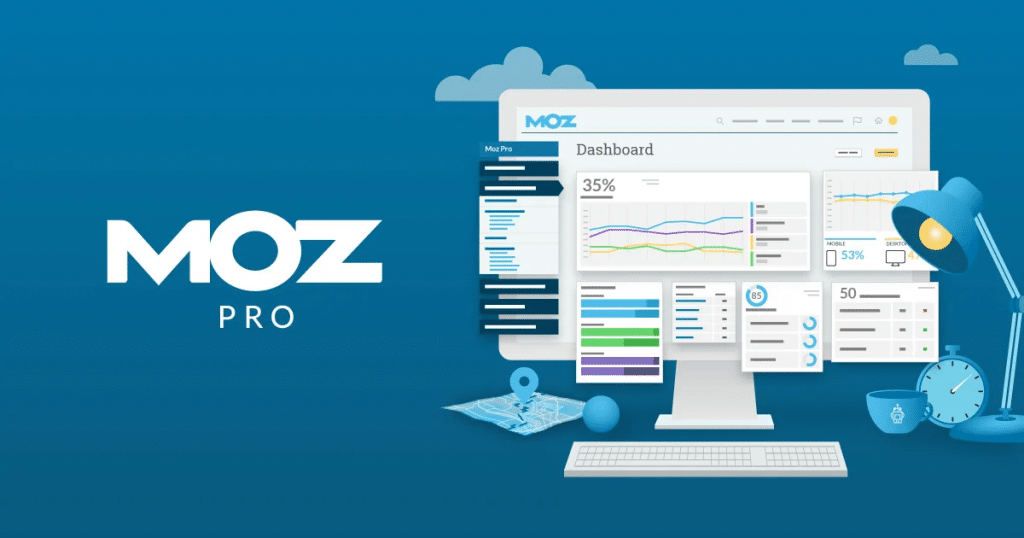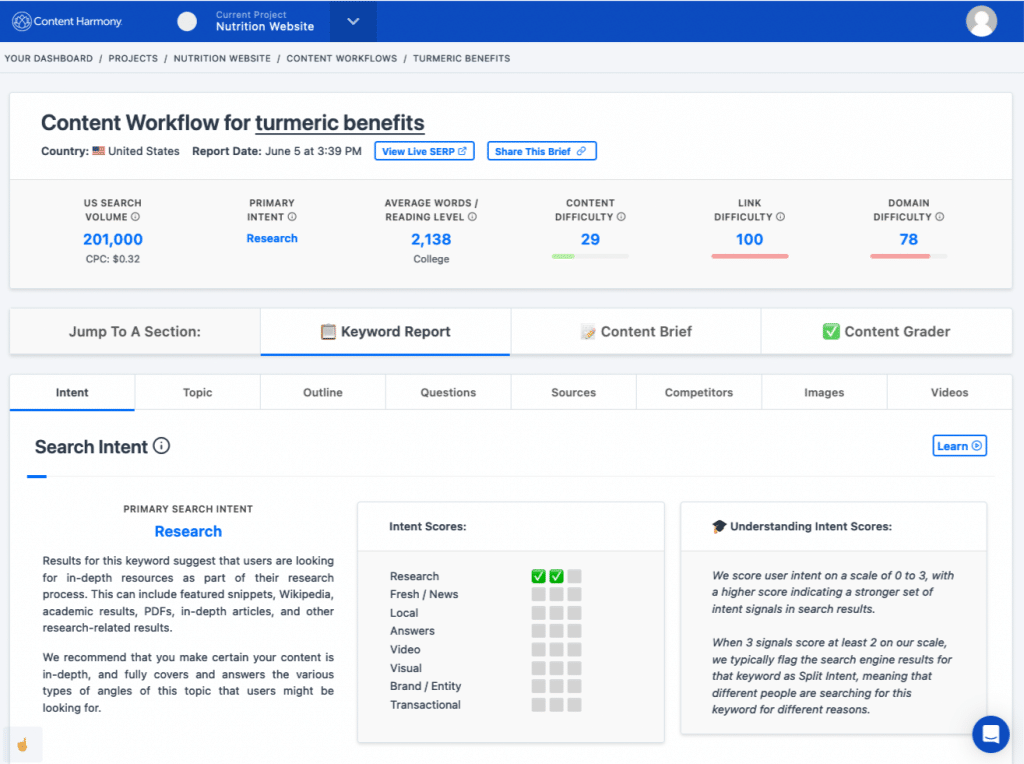When I first learned about content optimizers, I was suspicious. The thought of employing a tool to improve the content on my website sounded too good to be true. However, as I dug deeper and began using one, the advantages were apparent. In this article, I’ll explain what a content optimizer is and how it can improve your website. Let’s look at the realm of content optimizers and how they can help you improve your internet visibility.
Understanding Content Optimizers
A content optimizer is a tool that helps improve the quality and efficacy of your website’s content. It examines a variety of factors, including keyword usage, readability, and general structure, to ensure that your content is both entertaining and SEO-friendly. Using a content optimizer allows you to make data-driven decisions to increase the performance and exposure of your content on search engines.
Early in my content creation experience, I struggled to comprehend why some of my posts performed better than others. It wasn’t until I began utilizing a content optimizer that I realized the trends. The tool highlighted areas I hadn’t considered, such as keyword density and internal linking, and suggested ways to improve the SEO value of my content. The gains were virtually instantaneous, with a significant boost in traffic and engagement.
Key Features of Content Optimizers

#1. Keyword Analysis
Content optimizers assist you in identifying the most relevant keywords to target. They look at keyword difficulty, search volume, and relevancy to guarantee you’re utilizing the most successful terms.
According to Ahrefs, 90.63% of content receives no traffic from Google, which is largely due to inadequate keyword optimization.
#2. Readability Score
These tools evaluate your content’s readability and provide scores and tips for improving its accessibility and engagement.
I used to write really technical essays that were difficult for the general public to comprehend. A content optimizer assisted me in simplifying my terminology, hence increasing my readership.
#3. SEO recommendations
Content optimizers offer comprehensive SEO recommendations, from meta descriptions to alt text, to help your content rank higher in search engines.
Backlinko discovered that pages with meta descriptions receive 5.8% more clicks than those without.
#4. Content Structure
Optimizers examine your content’s structure to ensure that it is well-organized, with appropriate headers, subheadings, and paragraphs. This improves the user experience and SEO. After reorganizing my content based on optimizer recommendations, I noticed a considerable decrease in bounce rates, indicating that people stayed on my pages longer.
#5. Internal Linking
Effective internal linking is critical for both SEO and user navigation. Content optimizers recommend the best areas to include internal links to keep readers interested and increase SEO.
According to HubSpot, firms with effective internal linking strategies receive a 25% increase in organic traffic.
How to Use a Content Optimizer: Step-by-Step Guide
- Select a Content Optimizer: Use a recognized tool such as SEMrush, Yoast, or Clearscope.
- Analyze Existing Content: Run your current content through the optimizer to find places for improvement.
- Implement Suggestions: Follow the tool’s guidelines for keyword usage, readability, SEO components, and structure.
- Monitor Performance: Track changes in traffic, engagement, and search rankings to assess the impact.
- Continuous Optimization: Use the optimizer regularly to keep your content up to date and in line with SEO best practices.
How to Select the Right Free Content Optimization Tool
It is critical to select the correct content optimization tool since search engines prefer optimized content over non-optimized content when ranking search engine sites. Content optimization encompasses a variety of components to guarantee that your content is not just search engine friendly, but also appealing to your target audience. To optimize your content efficiently, you must undertake the following critical actions:
- Research includes competitive analysis, keyword research, concept generation, and topic gathering. This can help you stand out from your competition, resulting in more engagement and outcomes.
- Create content while considering on-page SEO structure and content readability. This captures the attention of search engines and provides a positive user experience, resulting in long-term success.
- Continue to update and improve your content by adding new content and updating current ones. It is good practice to review previously published content regularly to ensure that the information remains relevant as periods and seasons change.
Top 15 Content Optimization Tools
You can choose the one that best meets your content goals.
#1. Yoast SEO

Paid and Free (Freemium).
Yoast SEO is a WordPress plugin that optimizes content for SEO. It offers readability analysis, keyword optimization, and ideas for boosting SEO factors such as meta descriptions and alt text.
Features:
- Real-time content analysis.
- Readability check.
- Optimization of keywords
- XML Sitemaps
- Social media integration.
Pros:
- Easy to use.
- Comprehensive SEO assistance.
- Frequent updates.
Cons:
- Advanced functions are only accessible in the premium edition.
- There is limited support for non-WordPress websites.
Price: Free version; Premium begins at $99 per year.
#2. Clearscope

Paid
Clearscope uses artificial intelligence (AI) for content research and optimization. It allows you to locate important keywords and enhance your content for readability and SEO.
Features:
- Keyword Research
- Content grading
- Readability analysis
- Competitive analysis.
Pros:
- Highly accurate keyword suggestions.
- Simple-to-use interface.
- Excellent client assistance.
Cons:
- Expensive for small business
- Lower-tier plans have limited features.
Price: Starts at $170 per month.
#3. SEMrush

Paid
SEMrush is a comprehensive marketing solution that includes keyword research, site audits, backlink analysis, and content optimization.
Features:
- Keyword Research
- Site audit.
- Backlinks analysis
- Competitive analysis
- Content optimization.
Pros:
- Comprehensive toolset.
- Detailed reports.
- Strong competitive analysis.
Cons:
- May be daunting for novices.
- Expensive for small business
Price: Starts at $119.95 per month.
#4. Surfer SEO

Paid
Surfer SEO offers data-driven content optimization by evaluating top-ranking pages and making real-time recommendations for optimizing your content.
Features:
- Content Editor
- Keyword Research
- SERP Analyzer
- Content Planner
Pros:
- Real-time SEO advice.
- Simple to integrate into existing workflows.
- Useful visualizations.
Cons:
- A learning curve for new users.
- Limited integrations.
Price: Starts at $59 per month.
#5. Ahrefs

Paid
Ahrefs provides backlink analysis, keyword research, content research, and site auditing tools to help you enhance your SEO and content performance.
Features:
- Backlinks analysis
- Keyword Research
- Content Explorer
- Site audit.
- Rank Tracker
Pros:
- Comprehensive data.
- Great for backlink analysis.
- Ongoing updates and new features.
Cons:
- High price for premium features.
- Complicated interface for novices
Price: Starts at $99 per month.
#6. MarketMuse

Paid
MarketMuse employs AI to assist with content analysis and optimization, delivering insights to produce content that outperforms competitors.
Features:
- Content research.
- Topic Modeling
- Competitive analysis.
- Content scoring.
Pros:
- Effective AI-driven insights
- Aids in identifying content gaps.
- Easy to use.
Cons:
- Expensive for small business
- Limited trial possibilities.
Price: Starts at $79 per month.
#7. Grammarly

Paid and Free (Freemium).
Grammarly is a writing tool that checks for grammar, spelling, punctuation, and style, ensuring that your content is polished and professional.
Features:
- Check your grammar and spelling.
- Style and tone suggestions
- Plagiarism detection
- readability score
Pros:
- Easy to use.
- Comprehensive writing suggestions.
- Integrates with several systems.
Cons:
- The premium version is necessary for enhanced features.
- Occasionally overcorrects.
Price: Free basic version; premium begins at $12 per month.
#8. Moz Pro

Paid
Moz Pro provides a variety of SEO tools, such as keyword research, site audits, backlink analysis, and rank tracking.
Features:
- Keyword Research
- Site audit.
- Backlinks analysis
- Rank monitoring.
- On-page optimization.
Pros:
- Comprehensive SEO toolkit.
- User-friendly interface.
- Excellent client assistance.
Cons:
- Expensive for small firms
- Fewer data than some competitors.
Price: Starts at $99 per month.
#9. ContentHarmony

Paid
ContentHarmony offers AI-powered content optimization and keyword research tools to help you develop high-quality, SEO-friendly content.
Features:
- Content Briefs
- Keyword Research
- Topic-based scoring
- Content grading
Pros:
- AI-powered insights.
- Simple-to-use interface.
- It helps to streamline content creation.
Cons:
- High costs for small teams.
- Limited integrations.
Price: Starts at $29 per month.
#10. SEOptimer

Free
SEOptimer is a simple, free SEO analysis tool that reveals information about on-page SEO, page performance, and social media integration.
Features:
- On-page SEO analysis.
- Page performance review
- Social media analysis.
- Keyword recommendations.
Pros:
- Free to use.
- Reports are easy to grasp.
- Ideal for rapid audits.
Cons:
- Fewer features compared to paid tools.
- Basic recommendations.
Price: Free.
#11. Ubersuggest

Paid and Free (Freemium).
Ubersuggest provides keyword suggestions, SEO auditing tools, and content ideas. It’s ideal for small enterprises and beginners.
Features:
- Keyword Research
- SEO Audit
- Content ideas
- Backlinks analysis
Pros:
- Affordable.
- User-friendly interface.
- Suitable for beginners.
Cons:
- Limited advanced features.
- The accuracy of the data may vary.
Price: Free basic version; paid plans begin at $12 per month.
#12. Copyscape

Paid and Free (Freemium).
Copyscape is a plagiarism detection tool that ensures your content is unique and not seen elsewhere on the web.
Features:
- Plagiarism detection
- Batch search.
- Copy and paste checks
Pros:
- Accurate plagiarism detection.
- Easy to use.
- Affordable for occasional use.
Cons:
- Apart from plagiarism checking, the functions are limited.
- The pay-per-search strategy might be pricey.
Price: Free basic version; Premium begins at $5.99 per month.
#13. Answer the public

Paid and Free (Freemium).
Answer The Public produces content ideas using search queries and prepositions. It’s great for keyword research and content preparation.
Features:
- Keyword Research
- Content ideas
- Visual Data Representation
Pros:
- Easy to use.
- Creates original content ideas.
- Helps understand user intent
Cons:
- The free version has limited searches.
- Can be costly for regular usage.
Price: Free restricted use; paid plans begin at $99 per month.
#14. BuzzSumo

Paid and Free (Freemium).
BuzzSumo enables you to discover hot content and analyze what is performing effectively in your business. It’s ideal for content research and ideation.
Features:
- Content discovery.
- Identifying influential individuals.
- Content Analysis
- Alerts and alerts.
Pros:
- Great for content research.
- Identify influencers
- Monitors content performance.
Cons:
- Expensive for smaller teams
- The free version has limited features.
Price: Free, restricted use; paid plans begin at $99 per month.
#15. The Hemingway Editor

Paid and Free (Freemium).
Hemingway Editor is a writing tool that improves readability by highlighting complex sentences and recommending simpler ones.
Features:
- readability score
- Grammar and stylistic suggestions.
- Emphasizes passive voice.
- Simple interface.
Pros:
- Enhances writing clarity.
- Easy to use.
- A free version is available.
Cons:
- Limited advanced features.
- No SEO ideas.
Price: The web version is free, while the desktop app starts at $19.99.
These tools include several capabilities to assist you in optimizing your content for increased performance, engagement, and SEO.
Template for optimizing blog posts:
Content Optimization Template
Title: An engaging and SEO-friendly title.
Introduction:
- Engage the reader with an interesting fact or question.
- Provide a brief introduction to the issue and its relevance.
The Main Body:
- Section 1: Explain the first essential idea using examples and facts.
- Section 2: Expand on the second major point using personal anecdotes.
- Section 3: Highlight the third major point with quotes from experts.
Conclusion:
- Summarize the major points.
- Include a call-to-action (e.g., ask readers to remark, share, or contact you for further information).
SEO elements:
- Meta Description: A brief overview containing selected keywords
- Alt Text: Descriptive text for photos containing keywords
- Internal Links: Relevant hyperlinks to other articles or pages
Key takeaways
- Use a content optimizer to find the most relevant keywords for your audience and boost your search rankings.
- Simplify your terminology to make your content more accessible and appealing to a larger audience.
- Optimize meta descriptions, alt text, and other SEO aspects to improve visibility and click-through rates.
- To improve the user experience, ensure that your content is well-organized, with appropriate headings and paragraphs.
- Use internal links carefully to keep readers engaged and improve SEO.
Conclusion
A content optimizer can be a game changer for your website, allowing you to develop content that is both entertaining and search engine optimized. Using these tools, you may make data-driven modifications to your content’s performance and increase traffic to your site. Have you ever utilized a content optimizer before? What benefits did you observe? Share your experiences, and let’s talk about how we can all improve our content strategies.
Related Articles
- Everything You Need to Know About Content Marketing Tools (Plus Best Picks)
- Podcast Monitoring: The 5 Top Podcast Monitoring Tools You Should Use in 2024
- 15 Best Link Building Tools: A Comprehensive Review from My Personal Experience
- The Top Best 11 Brand Monitoring Tools 2024 (Free & Paid)
- Top PR Tracking Tools of 2024: Navigating the PR Landscape





